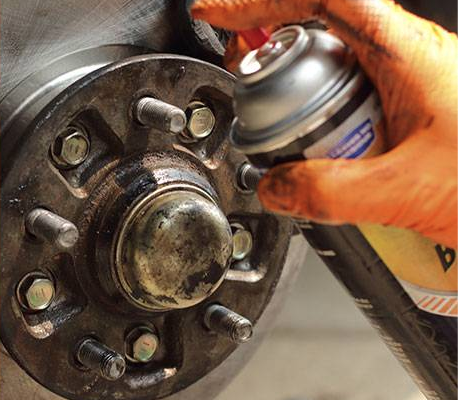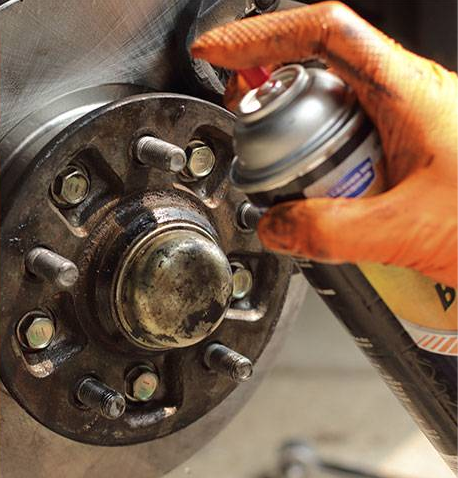Key Points/Overview
TCE was historically used as a degreaser for metal parts but now is primarily used as a raw material in the production of refrigerants.
TCE can be an effective extraction solvent for greases, oils, fats, waxes and tars and has been used in the textile processing industry to scour cotton, wool and other fabrics.
TCE’s presence in industry products and processes, and a number of now phased-out uses, have made it a commonly detected environmental pollutant, albeit at low concentrations.
Uses & Benefits
Trichloroethylene (TCE) is a chemical compound that has been used as an industrial solvent, primarily to remove grease from metal parts during the manufacture of a variety of products. It also was used in certain consumer products such as paint removers, typewriter correction fluids, adhesives and stain removers. Today TCE is primarily used in the manufacture of refrigerants and other chemicals.

Industrial Uses
- Industrial Cleaning and Degreasing – TCE was used in industrial settings as a cleaning solution and degreaser of zinc, aluminum, brass, bronze and steel parts during industrial fabrication and assembly.1
- Industrial Solvent – TCE can be an effective extraction solvent for greases, oils, fats, waxes and tars and has been used in the textile processing industry to scour cotton, wool and other fabrics. As a general solvent or as a component of solvent blends, trichloroethylene has been used with adhesives, lubricants, paints, varnishes, paint strippers, pesticides and cold metal cleaners.
- General Purpose Solvent -Trichloroethylene has been as a solvent for extraction, waterless drying and finishing, and as a general-purpose solvent in adhesives, lubricants, paints, varnishes, paint strippers, pesticides, and cold metal cleaners.2 Trichloroethylene can be an excellent extraction solvent for greases, oils, fats, waxes, and tars.2

Consumer Uses
- Furniture and Automotive Care – TCE has been used in cleaning and furniture care products, arts and crafts spray coatings, and automotive care products like brake cleaners, and other consumer products.3
Historical Uses of TCE
Although TCE’s manufacture and use has decreased significantly in the past decade, TCE was first widely produced in the 1920s as a solvent for a variety of organic materials.
In the early- to mid-20th century, it was used widely to extract vegetable oil4 from source plants such as coconut and palm, decaffeinate coffee beans5 and combined with nitrous oxide in anesthetics. It was also used for removing residual water in the production of 100 percent ethanol.
TCE was also used as a dry cleaning solvent, but in the 1950s it was largely replaced in the United States by tetrachloroethylene (also known as perchloroethylene).

Safety Information
TCE’s presence in industry products and processes, and a number of now phased-out uses, have made it a commonly detected environmental pollutant, albeit at low concentrations.
Federal Oversight
TCE use and remediation is primarily overseen by the U.S. Environmental Protection Agency (EPA).
In 2014, the International Agency for Research on Cancer (IARC) updated its classification of TCE, indicating that sufficient evidence exists that TCE can cause cancer of the kidney in humans, as well as some evidence of cancer of the liver and non-Hodgkin’s lymphoma.6 EPA has identified TCE as “carcinogenic to humans.”
Presence at Superfund Sites
According to the National Institute of Environmental Health Sciences, TCE is present at one-third to one-half of all Superfund sites as a contaminant in soil and groundwater.7 EPA oversees ongoing TCE remediation efforts and cleanup. A typical method for removing TCE from groundwater is to pump the water from the aquifer and treat it above ground.
EPA TSCA Risk Evaluation
In November 2020, EPA issued a risk evaluation of TCE, which identified potential hazards and exposures to determine whether uses of TCE have the potential to cause harm. TCE was one of 10 chemicals that EPA examined, as required under the 2016 legislative amendments to the Toxic Substances Control Act (TSCA). EPA is expected to develop regulations to address the identified risks over the next year or so.
Sources
- EPA: trichloroethylene.pdf (epa.gov)
- ASTDR: Toxicological Profile for Trichloroethylene (cdc.gov)
- Minnesota Department of Health: Trichloroethylene (TCE) and Your Health- EH: Minnesota Department of Health (state.mn.us)
- Science Direct: Remediation of trichloroethylene-contaminated soils by star technology using vegetable oil smoldering – ScienceDirect
- Chicago Tribune: WORRIED ABOUT DECAF COFFEE? FEARS ARE GROUNDLESS – Chicago Tribune
- IARC: IARC Publications Website – Trichloroethylene, Tetrachloroethylene, and Some Other Chlorinated Agents
- National Institute of Environmental Health Sciences: In situ Bioremediation of TCE – Superfund Research Program (nih.gov)
- National Library of Medicine: Human Health Risk Assessment of Trichloroethylene from Industrial Complex A (nih.gov)
- EPA: SEMS Search | US EPA


